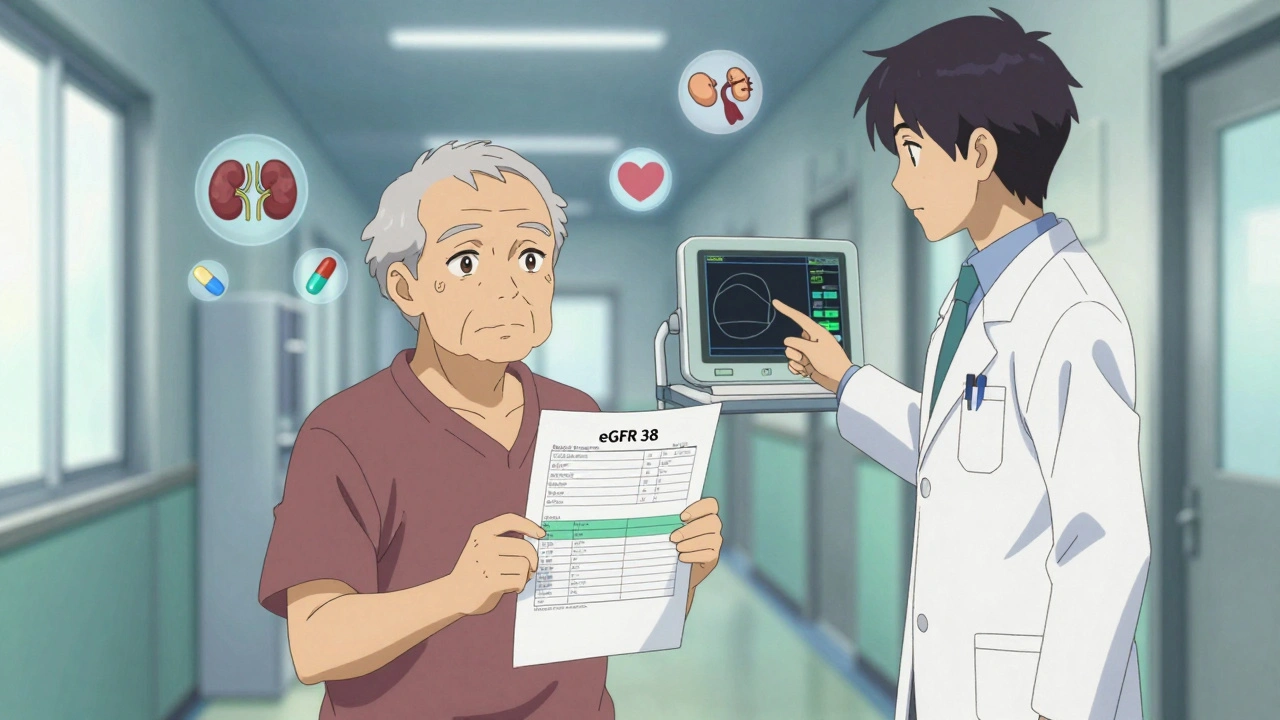Kidney Function: Why It Matters for Every Medication
Did you know your kidneys filter roughly 180 liters of blood each day? When you hear Kidney Function, the set of processes that remove waste, balance fluids, and regulate electrolytes in the body. Also called renal function, it keeps blood clean enough for every organ to work.
Because the kidneys act as the body’s built‑in filtration plant, any drug you take has to pass through them. The speed at which a medication is cleared is called Renal Clearance, the volume of plasma from which a drug is completely removed per unit time. When renal clearance drops, the drug stays longer, raising the chance of side effects. That’s why doctors pay close attention to kidney function before prescribing anything.
How Medications Interact with Your Kidneys
One serious risk is Nephrotoxicity, damage to the kidneys caused by certain drugs or their metabolites. Common culprits include some antibiotics, anti‑seizure meds, and even over‑the‑counter pain relievers. Our article on Divalproex Interactions walks you through which substances can tip the balance toward toxicity, while the Topamax guide shows dosage tricks to stay safe.
Behind every kidney‑related warning is Drug Metabolism, the chemical changes a drug undergoes, often in the liver, before it reaches the kidneys. Metabolism determines how much active compound arrives at the renal filters. A drug that’s heavily metabolized may produce by‑products that the kidneys must clear, which can be a hidden source of harm. That’s why our Levaquin comparison highlights the importance of checking both liver and kidney pathways before choosing an antibiotic.
When kidney function is compromised—say, in chronic kidney disease (CKD)—doctors must shrink the dose. This practice, known as dosage adjustment, isn’t just a math exercise; it’s a lifesaver. For example, the Glycomet SR vs Alternatives article details how metformin dosing changes once the glomerular filtration rate (GFR) falls below certain thresholds. Ignoring GFR can lead to drug buildup, lactic acidosis, and hospitalization.
Electrolyte balance is another piece of the puzzle. The kidneys fine‑tune sodium, potassium, and calcium levels, which many drugs influence. Our piece on Obesity and Joint Damage notes that weight‑related inflammation can strain both joints and kidneys, affecting how the body handles medications for pain relief like celecoxib. Understanding this link helps you pick the right painkiller without overloading your kidneys.
All of these concepts—renal clearance, nephrotoxicity, drug metabolism, dosage adjustment, and electrolyte balance—are woven into the drug guides you’ll find below. Whether you’re looking for a side‑by‑side comparison of antibiotics, safety tips for buying generics online, or insight into how a medication interacts with your kidneys, the articles in this collection give you practical, up‑to‑date information.
Ready to see how each medicine stacks up against kidney‑related concerns? Dive into the listings below and discover the facts you need to keep your kidneys happy while you manage your health.
Metformin and Kidney Function: How to Monitor and Adjust Doses Safely
Metformin is safe for most people with type 2 diabetes and mild-to-moderate kidney disease. Learn how eGFR guides dosing, when to hold the drug, and why stopping it unnecessarily can harm your health.
Why Monitoring Kidney Function Is Critical When Using Tobramycin
Learn why monitoring kidney function is essential when taking tobramycin, how to track labs, adjust dosing, and spot early signs of toxicity.

